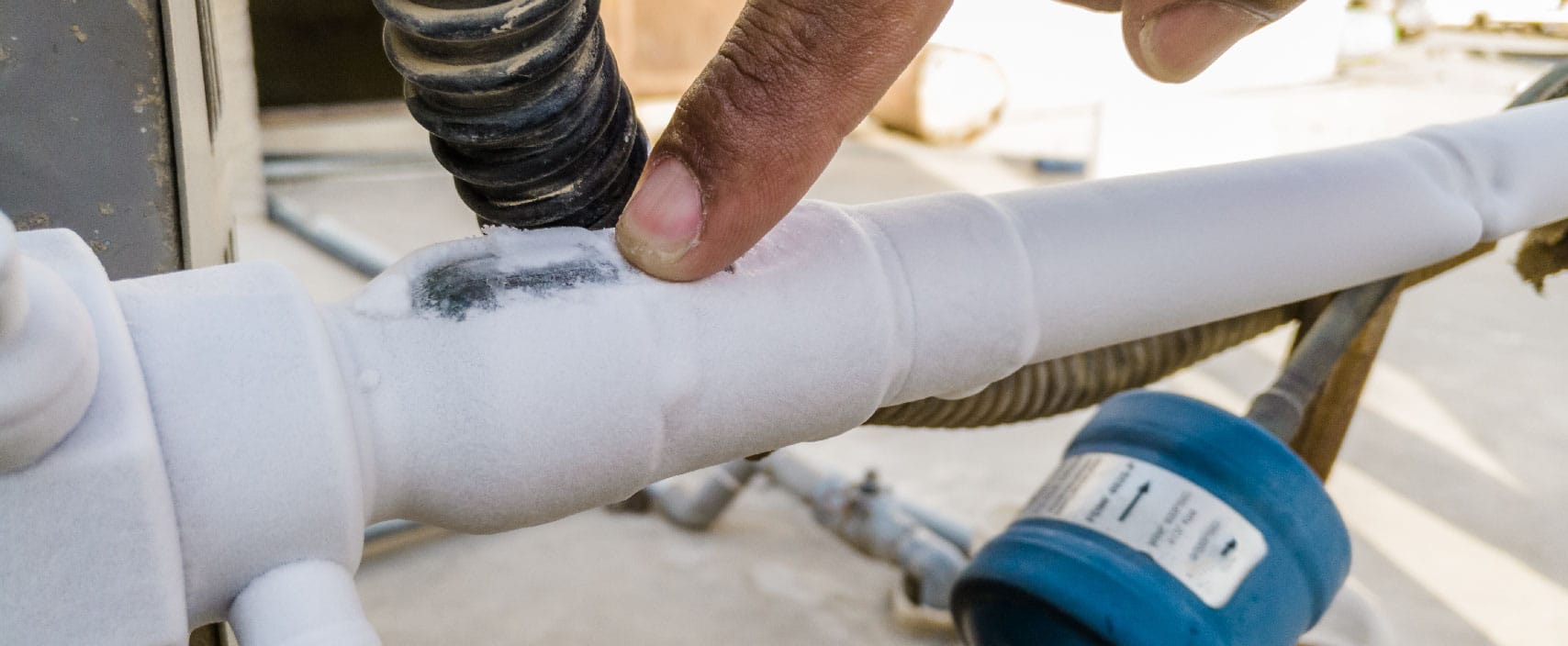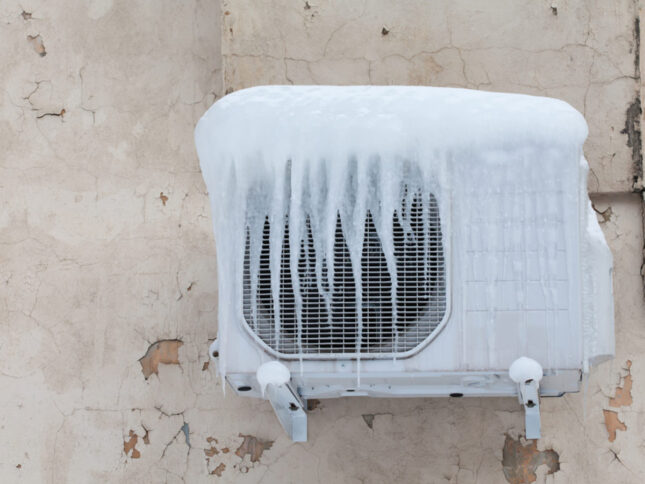Identifying a Frozen AC Pipe - Efficient Solutions for Home Air Conditioning Systems
Identifying a Frozen AC Pipe - Efficient Solutions for Home Air Conditioning Systems
Blog Article
The content in the next paragraphs relating to What Causes AC Pipes To Freeze? is pretty much informative. You should check it out.

Introduction
Finding that your air conditioner pipe is frozen can be worrying, especially during warm summer season when you rely upon your a/c unit one of the most. Understanding what to do in such a circumstance is vital to prevent further damages to your air conditioning system and guarantee your comfort inside your home.
Recognizing the Causes
Several elements can add to the cold of an air conditioner pipe. Understanding these causes can assist you resolve the issue efficiently.
Absence of Airflow
One usual source of an icy AC pipe is inadequate air flow. When the air flow over the evaporator coil is limited, it can create the coil to go down below freezing temperature, leading to ice formation on the pipe.
Low Refrigerant Levels
Inadequate refrigerant levels in your air conditioning system can likewise lead to a frozen pipeline. Low cooling agent degrees can cause the pressure in the system to drop, leading to the freezing of dampness on the evaporator coil.
Cold Weather Conditions
In chillier climates, freezing temperature levels outside can add to the cold of a/c pipes. If your air conditioner system is not properly protected or if there are leaks in the ductwork, cool air can penetrate the system, triggering the pipeline to freeze.
Dirty Air Filters
Dirty or clogged up air filters can restrict air flow in your AC system, bring about various problems, consisting of an icy pipeline. It's necessary to replace or clean your air filters routinely to make sure proper air movement and protect against ice buildup.
Signs of a Frozen A/c Pipe
Recognizing the signs of a frozen AC pipe is important for timely activity.
Decreased Airflow
If you discover a significant reduction in air flow from your vents, it might suggest a frozen pipe.
Ice Buildup on the Pipe
Visible ice buildup on the refrigerant line or the evaporator coil is a clear indication of a frozen a/c pipe.
Unusual Sounds from the Unit
Uncommon noises, such as hissing or bubbling, originating from your air conditioner system can signal that there's ice existing on the pipe.
Immediate Actions to Take
When confronted with an icy air conditioner pipe, it's necessary to act rapidly to prevent more damage to your air conditioning system.
Shutting off the air conditioner
The primary step is to turn off your a/c to prevent the system from running and aggravating the problem.
Looking for Blockages
Examine the location around the indoor device for any blockages that may be obstructing air flow, such as furnishings or curtains.
Defrosting the Pipe
You can utilize mild techniques like placing towels soaked in cozy water around the frozen pipeline to aid thaw it gradually.
Preventive Measures
Taking safety nets can assist avoid future events of an icy air conditioning pipeline.
When DIY Methods Fail
If your attempts to thaw the pipe or address other issues are not successful, it's time to contact a professional.
Relevance of Hiring a Professional HVAC Technician
A certified HVAC professional has the knowledge and devices essential to diagnose and repair problems with your air conditioning system safely and properly.
Normal Maintenance Checks
Schedule routine maintenance get in touch with a professional HVAC specialist to make sure that your AC system is running effectively.
Changing Air Filters
Frequently change or clean your air filters to stop air movement constraints and maintain ideal efficiency.
Protecting Exposed Pipes
If your air conditioning pipelines are subjected to cold temperatures, think about shielding them to stop cold throughout winter months.
Looking For Professional Help
If DIY methods fail to deal with the concern or if you're uncertain regarding exactly how to continue, it's ideal to seek help from a qualified HVAC service technician.
Conclusion
Handling an icy a/c pipeline can be an aggravating experience, but understanding just how to react can assist lessen damage and restore convenience to your home. By recognizing the reasons, acknowledging the signs, and taking prompt activity, you can properly attend to the problem and avoid future incidents.
Frozen AC Line: Why It Happens & What To Do About It
A frozen AC line can be a rather peculiar sight in a place like Phoenix, Arizona where nothing ever freezes. In this post, we’ll discuss what makes an air conditioner line frozen – and what you can do about it.
Dirty Air Filters
Did you know that you should be cleaning or replacing your air filters on a monthly basis? Failing to do this can result in airflow issues that, in turn, cause your evaporator coils and lines to freeze over. You’ll notice a buildup of ice on both components, although the buildup on your pipes will, of course, be more evident unless you open your air condition up to reveal the coils.
What To Do About It
Give your air filter a good cleaning if it’s reusable. If not, replace the filter outright. Next, switch your air conditioner’s fan setting on and leave it there for 2-3 hours. This will draw warm air in, helping to thaw your evaporator coil. You can also check out this article for some tips on cleaning the coils themselves if you’d like to speed the process up. Before you switch the unit back to its normal state, make sure the supply vents are completely unobstructed and free of dust or other debris.
If you keep having this issue even after replacing your filters regularly, contact a local HVAC repair company and have them inspect your evaporator coil, ductwork, and any other components that may be at fault. If you live in the Phoenix, Arizona area, give American Home Water and Air a call.
Low Refrigerant Levels/Leakage
What To Do About It
Contrary to what air conditioner “recharge” companies often tell their clients about refrigerant, it should never need to be simply refilled. You see, refrigerant runs in what experts refer to as a “closed loop.” Refrigerant really shouldn’t be leaving that loop. If it is, you’ve got a leak.
Paying someone to come and pump more refrigerant into your system (aka “recharge” it) isn’t the solution. Doing that will simply kick the can down the road. Besides, refrigerant leaks can be harmful to the environment and people in your home.
Rather, you need to take care of the leak with the help of a technician. Check out this article for some more information about dealing with air conditioners that are leaking refrigerant. Before you contact a technician, switch your thermostat to the off position. Then, switch the fan setting on and let it run for 2-3 hours so the unit can thaw.
Improper Temperature Setting
Improper temperature settings can also cause a drop in your air conditioner’s pressure. What many people don’t realize is that air conditioners are actually designed to run when temperatures have fallen above roughly 60 degrees Fahrenheit. If you run the unit when it’s cold outside, you’ll run into many issues, including frozen components.

I stumbled upon that article about Have a Frozen AC Line? Here’s How to Fix It when looking around the search engines. Enjoyed our piece of writing? Please share it. Help someone else discover it. Thank you for taking the time to read it.
Estimate Report this page